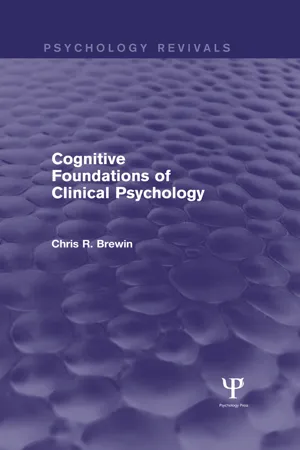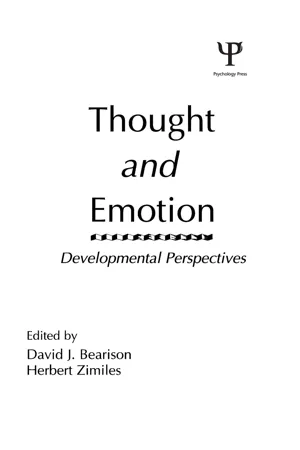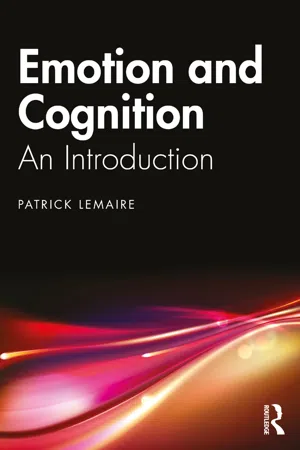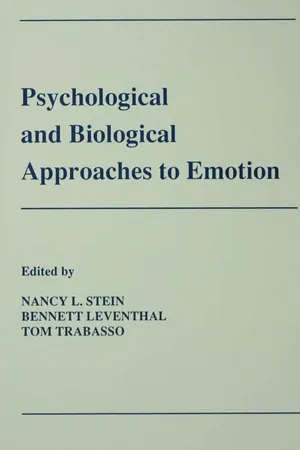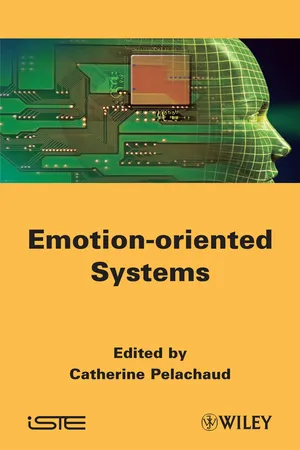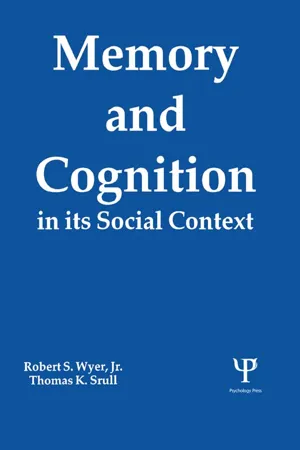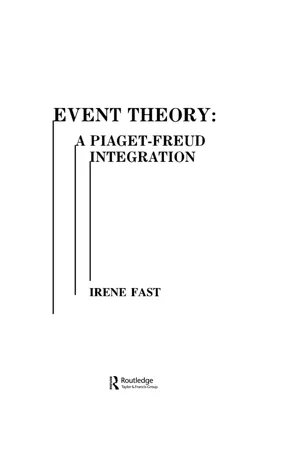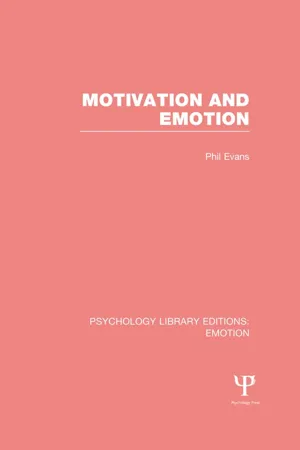Psychology
Cognitive Theory of Emotion
The Cognitive Theory of Emotion suggests that our emotions are influenced by our thoughts, perceptions, and interpretations of events. It emphasizes the role of cognitive processes in shaping emotional experiences, proposing that our appraisal of a situation determines our emotional response. This theory highlights the significance of mental processes in understanding and managing emotions.
Written by Perlego with AI-assistance
Related key terms
11 Key excerpts on "Cognitive Theory of Emotion"
- Chris R. Brewin(Author)
- 2013(Publication Date)
- Psychology Press(Publisher)
Clinical psychology is therefore in need of theories that can give an account of how affective states, and in particular distressing emotions, come about and how they may be altered. In the previous chapter we examined the origins of one particular type of affective response, conditioned fear, and concluded that there was strong evidence for the involvement of cognitive processes. We will now consider more general theories of emotion and the role that they assign to cognition. Because the literature on cognition and affect is extensive, we will focus on four topic areas of direct relevance to clinical practice. The first is concerned with cognitive theories of emotion, i.e., theories that emphasize the importance of a person’s cognitions in determining the nature of the emotional response. An opposing perspective, namely that affective judgments often occur prior to cognitive operations, forms the second topic. The third concerns the influence of transient emotional states on cognitive processes, particularly memory. The fourth deals with emotional reactions to major stressors from the point of view of imagery and memory processes, and includes an account of how emotional memories may be altered by exposure to corrective information. By this point we shall be in a better position to discuss the complex nature of the relationship between cognition and affect.Cognitive Theories of Emotion
Cognitive processes such as attention, recognition, and forgetting should in theory be able to occur with little, if any, accompanying affect, so long as the material being processed has no particular emotional significance for the individual. To ask a person to identify the capital cities of the countries of South America may be assumed to be a fairly affect-free task, unless that person has pleasant or unpleasant memories from a previous visit. Cognitive theories of emotion assume that a stimulus or a situation must first be attended to, recognized or classified, and related to previous experiences stored in memory before it can be evaluated or can arouse an emotional response. A small number of “basic” emotional responses have been identified, and it has been suggested that other emotions are made up of a blend of these. The five most commonly cited are happiness, anger, fear, sadness, and disgust, although, using the criterion that the facial expression associated with a basic emotion should be recognized all over the world, Ekman (1973 ) has argued that surprise should be included. Three influential proponents of cognitive theories of emotion are Schachter (1964 ), Lazarus (1966 ), and Weiner (1986- eBook - ePub
Thought and Emotion
Developmental Perspectives
- D. J. Bearison, H. Zimiles(Authors)
- 2014(Publication Date)
- Psychology Press(Publisher)
Yet, if confusion about what is to be meant by terms like cognition and emotion is to be avoided, some explicit characterization of metatheoretical commitments seems to be a necessity. We need, in other words, reasoning of the following sort: Given that this is the way the world (human and nonhuman, mental and physical) is organized and that this is the nature of the psychologist's task, then this is the general form that theoretical explanation ought to take. Within the context of this form of general theory, here is a way to make consistent sense of the terms cognition and emotion. Given that this is what we mean by cognition and emotion, here is a theoretical specification of the nature of cognitive and emotional psychological structures and processes, of the way in which these structures and processes might be related, and of the way in which developments in one might be reflected in the other.This is a large task. To provide a framework that makes consistent sense of questions about the relationship between emotion and cognition, we need a theory broad enough to give theoretical meaning to the terms cognition and emotion, if we are to make that theory reasonably clear and consistent, we need to characterize the metatheoretical principles on which it is based in a way that answers the seldom-asked question, "What kind of a theory is this?"It would be optimistic indeed to think that this could be adequately accomplished within the framework of a single chapter. Still, it is possible to indicate, in at least a preliminary way, some general ideas about the requirements for potentially adequate psychological theory that I have been developing over the past few years (Wozniak, 1975, 1981, 1983) and within that framework to discuss both the range of theoretical meanings that might accrue to terms like cognition and emotion and the sense that can and cannot (given the framework) be made of questions about the developing relationship between cognitive and emotional structures and processes. Following this, in order to indicate the potential value of this sort of analysis for the clarification of claims that theorists of emotion and cognition make, I will briefly and critically discuss one recently articulated and influential view of the development of the relation between emotion and cognition: the differential emotions perspective of Izard (1977, 1978, and chapter 3 - eBook - ePub
- Ruth Stein(Author)
- 2018(Publication Date)
- Routledge(Publisher)
If one accepts Cannon’s criticism of James, that visceral reactions are not the source of feeling quality, yet believes that visceral reactions are essential for feelings, the next logical step is to adopt the so-called cognition-arousal perspective on emotion (Leventhal, 1979). This view maintains that emotion as a whole consists of the integration of cognitions of the circumstances eliciting an emotion with autonomic arousal, while the quality of the emotional experience is provided by the content of the cognitive experience. In addition to its empirically justified criticism against visceral action as determining emotion, centralist cognitive theory has received support from the long-recognized fact that situational events play a critical role in the selection of emotional responding, that environmental cues or labels produce or emerge as emotional qualities. In this context belongs the famous experiment of Schachter and Singer (1962). Here it is assumed that, owing to the fact that the state of arousal is diffuse and its meaning unclear, there arises a ‘need to know,’ to be able to explain the arousal sensations. The aroused individual is said to search his environment for a definition or a causal antecedent of his arousal; when the antecedent cause is identified or labeled, the perception of the cause is itself felt as a particular emotional quality. In this framework it is assumed that although arousal is necessary for emotional experience and is consciously noticed, only the cognitive event is sufficient to create the emotional quality; the experience of different emotions depends on the prior differentiation of the meaning (cognition) of the eliciting situation. Although methodological difficulties have been found with Schachter and Singer’s experiment, the view grounding it has been elaborated in many ways to express a very basic idea. The idea is that emotion arises from the way a person construes the actual or anticipated transaction with his environment, that the beliefs or assumptions a person holds about himself and the world determine his emotional responses.One distinguished proponent of this view is George Mandler (1975, 1981, 1982, 1983). An ardent believer in cognitive psychology, Mandler argues that psychology is now able to provide a general framework for understanding emotions, which would account for the interaction between physiological and symbolic mechanisms. Inspired by Schachter and Singer (1962), Mandler integrates the experience of autonomic events with the cognitive, evaluative analysis of meaning he believes is continuously performed by the mental apparatus. Mandler sees an emotion as determined by three factors: the inner experiencing of ongoing autonomic activity, a constant cognitive analysis of the current state of the person and his world, and the interactions of these cognitive analyses with other cognitive processes. Throughout his writings, Mandler studies the many facets of the relationship between visceral and cognitive activity and views the emotions as generated by a concatenation of these two major components.Mandler believes that eventually, when the particular generating mechanisms of emotion will be elucidated, the umbrella concept of emotion will become superfluous, in a manner analogous to what has occurred in the psychologies of memory, perception, or thought, which concentrate on processes rather than on definition and have differentiated into more particular areas of investigation.In his 1975 analysis of emotional experience, Mandler sees physiological arousal as contributing to the gut aspect of emotions—their intensity and ‘bodily’ feel—while evaluative cognitions deal with the ‘mental’ feel of emotions—their quality and subjective content. In his view, when autonomic activation and cognitive meaning analysis occur together, they are perceived in a conscious process that is experienced as a single event, which, like other gestaltlike experiences, is different from the sum of its parts. - eBook - ePub
Attention and Emotion
A Clinical Perspective
- Gerald Matthews, Adrian Wells(Authors)
- 2016(Publication Date)
- Psychology Press(Publisher)
CHAPTER ONE Introduction: Cognitive Theory of Emotional DisordersClinical psychology has been revolutionised by an influx of ideas and techniques derived from cognitive psychology and by the central metaphor that the mind functions as a processor of information. The basic assumption of the clinical application of cognitive theory has been expressed most economically by Ellis (1962). He suggests that emotional disorder is associated with irrational beliefs, particularly about the self. Irrational beliefs lead to both unpleasant emotions and ineffective, maladaptive behaviour. This theory expresses several hypotheses which have become widely accepted by clinicians working within the cognitive approach. First, beliefs have a causal effect on emotion and well-being. This hypothesis differentiates the cognitive approach from behaviourism. Second, beliefs, as causal agents, are expressed in verbal, propositional form, and can be accessed consciously during therapy. This hypothesis distinguishes the cognitive approach from most psychodynamic approaches, in which “latent” beliefs are unconscious. Third, therapy should be directed towards changing beliefs through restructuring cognitions, as in Ellis’ (1962) rational emotive therapy, in which the patient is taught to recognise and modify irrational, harmful self-beliefs.The core assumptions of the cognitive approach just described are not in themselves sufficient to provide a workable model of emotional disorder. The most obvious difficulty is the resistance to change in irrational beliefs often encountered clinically. The person’s self-knowledge is not simply an internal “file” of disconnected beliefs which the therapist can erase and replace with more realistic propositions. People seem to construct and revise self-beliefs actively on the basis of some internal set of ground rules for interpreting the world. Emotionally disturbed patients may be characterised not so much by their specific beliefs as by the general frameworks they use to understand their environment and their place in it. In other words, clinicians must address the cognitive processes by which patients arrive at their maladaptive interpretation of the world. Another factor is the possibility of unconscious cognitive processing. Studies comparing introspective reports of processing with objective data have shown that people lack awareness of even some quite complex mental operations (Nisbett & Wilson, 1977). A patient’s self-reports will provide only an incomplete and possibly distorted picture of their actual cognitive functioning. Psychopathology may be influenced by “automatic” processes, which may be more difficult to influence than conscious beliefs. In addition, people may fill the gap in conscious awareness by making attributions - eBook - ePub
Emotion and Cognition
An Introduction
- Patrick Lemaire(Author)
- 2021(Publication Date)
- Routledge(Publisher)
Chapter 1 Emotion and cognition: Introduction DOI: 10.4324/9781003231028-1 Emotions play a central role in the life of every human being. They shape our actions, our thoughts, and our relationships. They help us to detect, identify, and understand what is important to form memories and to make decisions. They guide our everyday actions. Because they are so central to our lives, emotions have been studied by researchers in disciplines across the cognitive and affective sciences (psychology, linguistics, philosophy, sociology, anthropology, computer science, psychiatry, and neuropsychology). The psychology of emotions is a vast research area, which has made a great deal of progress over the past 30 years (see Barrett, 2018 ; Barrett et al., 2016 ; Luminet et al., 2013 ; Niedenthal & Ric, 2017 ; Sander & Scherer, 2019, for general overviews). At both the theoretical and empirical levels, research in this area is increasingly abundant and technically sophisticated. Psychologists have explored many questions about emotions (see Table 1.1 for some examples). As researchers have sought to answer these questions, they have made significant progress on determining what emotions are (their components), when and under what conditions we experience them (their causes and determinants), why we have them (their functions), how universal they are (cultural, inter- and intra-individual, and developmental differences), and their impact on psychological functions such as cognition. This book focuses on the last of these questions. It surveys research on how emotions and cognition are linked. This opening chapter presents the questions about emotion-cognition relations that researchers have tried to answer thus far, and the methods they have used to do so. It begins with a general definition of emotions. It then presents the major research questions on emotion-cognition relations, and what makes these questions interesting and important - Nancy L. Stein, Bennett Leventhal, Thomas R. Trabasso(Authors)
- 2013(Publication Date)
- Psychology Press(Publisher)
Bower & Cohen, 1982 ). That simply acknowledges theoretical agnosticism; it does nothing to solve the problem.Emotion is not only anecdotally and phenomenally part of human thought and action; there is now a burgeoning body of evidence that emotional states interact in important ways with traditional “cognitive” functions. For example, Isen's work has shown that positive feelings determine the accessibility of mental contents in the process of decision making, serve as retrieval cues, and influence problem-solving strategies (e.g., Isen, Means, Patrick, & Nowicki, 1982 ). More generally, accessibility of mental contents is determined by the mood both at the time of original encounter and at the time of retrieval (Bower, 1981 ; Bower & Mayer, 1985 ).There are essentially two different views of emotional phenomena. One considers emotions to be discrete patterns of behavior, experience, and neural activity, usually consisting of some few (5 to 10) such patterns—the fundamental emotions such as fear, joy, and rage. I refer to this as the fundamentalist position (e.g., Izard, 1977 ; Plutchik, 1980 ; Tomkins, 1962 , 1963 ). Most of these theories are derived from Darwin (1872) , and basic emotions usually are seen as having developed as a function of human (mammalian) evolution, with other emotions being some combination of the fundamental ones. Given the wide variety of human emotion, this latter postulate engenders complex analyses of and recipes for emotion—something like a cordon bleu school of emotion.The other approach is cognitive and constructivist, which considers emotional experience (and behavior) to be the result of cognitive analyses and physiological (autonomic nervous system) response (e.g., Averill, 1980 ; Lazarus, Kanner & Folkman, 1980 ; Mandler, 1984 ). The constructivist approach has as its founding father William James (e.g., 1884- eBook - ePub
- Catherine Pelachaud(Author)
- 2013(Publication Date)
- Wiley-ISTE(Publisher)
These theories have also been highly useful for understanding intra- and interpersonal differences, notably cultural and social, in the triggering and differentiation of emotions. 1.5.3. Criticisms of appraisal theories of emotion The main criticism of these theories is their potentially excessive cognitivism. As such, while researchers opposed to this approach accept that appraisal theories explain specific types of emotional reaction, they deny the necessity of this process and propose that in a number of cases emotions are produced by non-cognitive factors [BER 93, LED 93, OHM 78, ZAJ 84]. A key question concerning the “emotion/cognition” debate lies in the definition of the term “cognition” (see the glossary in section 1.7). If we accept that appraisal can occur rapidly on several cognitive levels, including automatic and unconscious processes, then the criticism of excessive cognitivism no longer holds up (see [LEV 87] for their proposition of levels of processing in the appraisal process [MOO 09, MOO 10, ROB 09]). Another criticism of these theories concerns emotional disorders. For example, for a sufferer of arachnophobia, acquiring the explicit knowledge that a spider is harmless does not stop them from being scared [GRI 04]. The notion of levels of processing therefore seems equally important for responding to this criticism. However, it should be noted that this “multi-level” approach to the appraisal process has also been criticized because the levels proposed could be seen as being too diverse to cover the general concept of appraisal [GRI 04] - eBook - ePub
Women's Anger
Clinical and Developmental Perspectives
- Deborah Cox, Sally Stabb, Karin Bruckner(Authors)
- 2016(Publication Date)
- Routledge(Publisher)
Lewis’s (1993) position, Dodge argues that (a) all cognition is emotional, in the sense that all processing occurs with some level of arousal and energy; (b) the goal directing aspect of emotion drives attentional processes; and (c) our phenomenological experience of emotion can alter interpretation and vice-versa. In other words, as we reflect upon what we want to change or obtain, we attend to those things affectively and cognitively. We both think and feel about them simultaneously. Thus, Dodge sees cognition and emotion as integrated with each other but gives prominence to cognitive information processing as the basis for emotion.Stein, Trabasso, and Liwag (1993) present a cognitive appraisal model of emotion that is knowledge-based and situated, by which the authors mean that it explores the content of emotions, as well as conditions that elicit emotion, and plans or actions carried out in response to emotional reactions. Stein and colleagues assume that people have the ability to act intentionally and are goal-directed. People assess and monitor the status of their goals, particularly those with a high degree of salience or meaning to them. In this model, we have an emotion if our preestablished schemas about those goals do not match new information we receive. This mismatch triggers both a cognitive evaluation process and ANS arousal, which together constitute emotion.Taking a cross-cultural perspective on appraisal Ellsworth (1994) proposes that cultural differences in reported emotion can be explained by variation in how people appraise situations across cultures. She identifies a series of basic appraisal dimensions: attention/novelty (a change in the environment), valence/pleasantness (is the change positive or negative?), agency/control (can I do anything about it?), and norm/self compatiblity (have I lived up to or fallen short of some standard of my community or myself?). Different cultures encourage different interpretations of social situations along these dimensions, which most likely result in different emotions. This idea echoes in the work of Frijda and Mesquita (1994) - eBook - ePub
- Robert S. Wyer, Jr., Thomas K. Srull(Authors)
- 2014(Publication Date)
- Psychology Press(Publisher)
The two factors are obviously related. One’s affective reaction to a stimulus is basically an attribute of oneself. Moreover, the affect or emotion that one experiences may be both a determinant and an effect of one’s self-perceptions and the thoughts that one has about them. However, several theoretical and empirical issues are unique to each factor. In this chapter, we consider both the cognitive determinants and the cognitive consequences of people’s emotional experiences. Because our discussion cuts across almost all of the types of processing we have considered in previous chapters, it incidentally provides an integration of many of the issues we have addressed earlier.The Cognitive Representation of Affect and EmotionSingle stimuli or configurations of stimuli that we encounter in daily life often elicit configurations of subjective, physiological reactions. These reactions may either be innate, unconditioned responses to stimuli or may have become conditioned to stimuli through learning. Although we are typically unable to isolate the particular reactions that make up any given cluster, we are conscious of their occurrence and experience them as either pleasant or unpleasant. Moreover, we distinguish qualitatively between different clusters of pleasant (or unpleasant) reactions, and consequently come to assign them different verbal labels. This is presumably also a result of social learning. A mother who hears her child cry or observes other manifestations of an internal state that she personally labels as “sad” may tell the child “Don’t be sad.” This may lead associations to be formed between the label “sad,” the cluster of internal reactions the child experiences, and overt behaviors (e.g., crying) that the child is aware of manifesting. The resulting configuration of associations among subjective physiological reactions, behavioral manifestations, and verbal labels comes to function as a concept that is stored in memory, where it can be retrieved and used to process information and knowledge in much the same way as other concepts. - eBook - ePub
Event Theory
A Piaget-freud Integration
- Irene Fast, Robert E. Erard, Carol J. Fitzpatrick, Anne E. Thompson, Linda Young(Authors)
- 2013(Publication Date)
- Routledge(Publisher)
The remainder of the chapter sets forth a cognitive, intensional, and constructivist model of affect development integrating views from psychoanalytic, Piagetian, and contemporary cognitive developmental psychology. Although it is commonplace to think of affects as the most “subjective” of human phenomena, this chapter takes the view that the ability to attribute affects to the self and to conceptualize affects as “internal” psychological states of the self is a central and difficult developmental accomplishment, one that is achieved only with the decline of infantile narcissism and with the successive “decentrations” throughout development that gradually transform the human child from egocentricity to cognitive objectivity. The corollary of this objectivity is the subjectivity of affect.A Cognitive-Intensional-Constructivist View of EmotionBefore I go on to explain the terms “cognitive,” “intensional,” and “constructivist,” a few caveats are in order. First, this discussion is meant to be a limited undertaking, that of providing a description of some necessary features of emotion, not a comprehensive theory or a definition of emotion. Second, these features are meant to apply to the conceptualization of emotion, not to an introspective or phenomenological analysis of emotional states. In other words, to say that emotions have intrinsic cognitive components does not entail that we are always aware of these cognitive components in the emotions that we experience. Third, this conceptualization is meant to apply to adult, “mature,” standard cases of emotion. I am not claiming that in very young children emotions are “intensional,” or that their emotions are “cognitive” in the same sense as those of a mature adult. To explain how emotions develop into their mature form is a task of this chapter.In saying that emotions are intensional (following Brentano, 1973/1874), I want to emphasize this aspect of emotion, namely, that emotions are “of” something, that emotions are “directed” to objects. If one is fearful, one is fearful of something (though one may not be able to articulate just what that is); if one loves, one loves someone or something; if one is angry, one is angry at someone or something. Leeper (1970) and Averill (1980) are two psychologists who have held this view explicitly, although implicitly it seems to underly much recent research in the cognitive developmental psychology of the emotions. In saying that emotions are cognitive,3 I am suggesting that emotion has cognition as an intrinsic part, that emotions and their cognitions are not conceptually separable. (Certainly we may be aware of an emotion without awareness of its cognitive aspects. As mentioned above, this paper is intended to be a conceptual analysis of emotion, not an introspective one.) I see these two aspects as being related—it is via their cognitive aspects that we can explain the “directedness” of emotion. In saying that this account is constructivist - eBook - ePub
- Phil Evans(Author)
- 2014(Publication Date)
- Psychology Press(Publisher)
10Affect, emotion, and cognitionWe left emotion at the end of chapter 6 in a state of ‘becoming’. Simple physiological theories such as those of James and Lange were shown to be inadequate. The famous experiment by Schachter and Singer (1962) turned out to be more noteworthy for the push it gave to increasingly cognitive ways of looking at emotion than for the definitiveness of its findings. In this chapter we examine further the more recent ‘cognitivization’ of emotion; we shall see that arguments about the role of cognition in emotion reflect conceptual confusion as much as genuine differences of opinion. If indeed linguistic philosophers wished to identify the one area of psychology which they would find most tiresome it would probably be the area of emotion. For reasons that will become apparent as this chapter develops, I have chosen to include the additional word ‘affect’ to share pride of place in the chapter heading.Schachter’s hypothesis was that arousal and cognitions (drawn from the social context) are both necessary components of an emotion. The arousal, as it were, gives guts to the emotion. The cognition tells us what exactly the guts are being given to. I deliberately use this ‘hot’ language description so that we can contrast this position with the next bit of cognitivization that took place. In a series of experiments, Valins introduced a methodology based on giving false feedback of heart rate to subjects. In doing so, Valins was making a cognitive take-over bid for the entire emotion construct by suggesting that a person does not actually need veridical knowledge of gut arousal, through, for example, heart rate. Instead the person ‘coldly’ assesses information about external social context and internal bodily arousal. The experiments aimed to give support to this view.
Learn about this page
Index pages curate the most relevant extracts from our library of academic textbooks. They’ve been created using an in-house natural language model (NLM), each adding context and meaning to key research topics.
